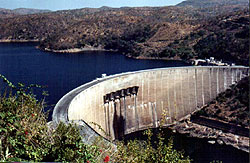|
Capture the African Rhythm,
|
But Why Zambian Safari?
The World Tourism Organisation (WTO) has ranked Zambia as Africa's No 1 emerging tourist destination.
The UK 2004 Trends and Spends Survey also awarded Zambian safari the No 10 ranking in the "best long-haul destinations". At No 10 Zambia is the only other African country in the top ten ranking
Zambian safari is in a land of glorious African sunsets, warm smiling people, ancient traditions and mystic legends, and of nature at it’s wildest.
Because Zambian safari is Africa's best kept secrets!
- The earth’s widest and awe-inspiring waterfall, the Victoria Falls.
- The wild and mighty Zambezi River and its tributaries.
- The breath-taking lakes and wetlands such as Lake Kariba and Bangweulu Floodplain.
- A profusion of birds such as found at Lochinvar National Park .
- Teeming and abundant wildlife.
- Exquisite pristine wilderness.
- The warmest of African welcome.
- …and all this in one friendly country.
Livingstone in Zambia is now acclaimed, and rightly so, the Southern Africa Adventure Centre Zambia, the Land
Covering a total surface area of 752,614 square kilometers, Zambia is a large country. It is slightly larger than Texas State in the USA or slightly larger than France and Belgium combined. Zambia is generally a high plateau averaging between 1,060 metres (3,500 ft) and 1,363 metres (4,500 ft) above sea level. This makes the country’s weather mild and pleasant.
Zambia, the Water Resources
Zambia’s water surface is 11,890 square kilometers. The water bodies are mainly from the three natural lakes in northern Zambia. The fourth is in the south, the exciting man-made Lake Kariba. When commissioned in 1959 Lake Kariba was the largest man-made lake in the world. It measures 280 kilometres long and 40 kilometres at it’s widest. The water spots, game parks and lodges dotted along the lake support Zambian safari.

To maintain this incredible heritage the issue of conservation has become cardinal. It is the only way the ecotourism can remain sustainable. Learn more about the juggler’s act when man decides to intervene to protect endangered species in Africa Zambia, the People
Zambian safari is also about the people. Despite the low population to land ratio (about 13 per sq km) there are 73 dialects spoken in Zambia. However, the official language is English. All media and business is in English and most Zambians speak it fairly well. Out of the 73 ethnic groups (tribes) 20 celebrate special cultural ceremonies on an annual basis. These manifest customs, social life, rituals, oral history, material and spiritual culture. Visitors are welcome to watch these ceremonies because they’re part of Zambian safari.
There is freedom of worship in Zambia with over 15 different churches. However, 60% of Zambians follow the Christian faith.
Zambia, the Natural Resources
Zambia has 19 national parks and 34 game management areas. The parks alone cover 47,662 square kilometres. The parks and game management areas together constitute 30% of Zambia. Some game reserves are privately owned while the major ones are state controlled. Zambia has a wide variety and a large profusion of wildlife, both large and small and including over 749 bird species recorded so far... The counting continues! So Zambia is a birders paradise.
The variety and concentration of wildlife is unique for both large and small animals. The waters are full of fish, hippo and the ubiquitous crocodile.
Besides the abundant wildlife, pristine wilderness, great fish variety rivers, and lakes, Zambia holds 6% of the worlds copper reserves. It also has world-class quality emeralds, aquamarines, amethyst and tourmalines. While in Zambia consider to pick some germs. There is a variety to choose from, both polished and raw.
Vegetation is savannah type with lots of trees varying in density. The climate makes Zambia suitable for a wide range of farming crops. Vegetables and fruits such as citrus, bananas, pineapples, mangoes, avocadoes, all grow everywhere.
And Why Africa’s Best Kept Secret?
Because it’s a haven of peace! No civil war has occurred here and its 73 tribes have lived and continue to live in harmony. Zambians epitomise the unity in diversity! The smiling warm hearted Zambians have hosted and continue to host refuges from civil strive in neighbouring countries. So Zambia safari is in the midst of the natural paradise.
Zambia, the Climate
Although Zambia lies in the tropics, the general height of the plateau ensures that the climate is seldom unpleasantly hot, except in the valleys. There are three seasons: the cool, dry winter season from May to September; the hot, dry season in October and November; and the rainy season, which is a little hotter, from December to April.
There is more to be added to Zambian safari... Keep up to date by subscribing to my newsletter "Africa's Best Kept Secret."
Zambia African Safari © ZAS 2004


